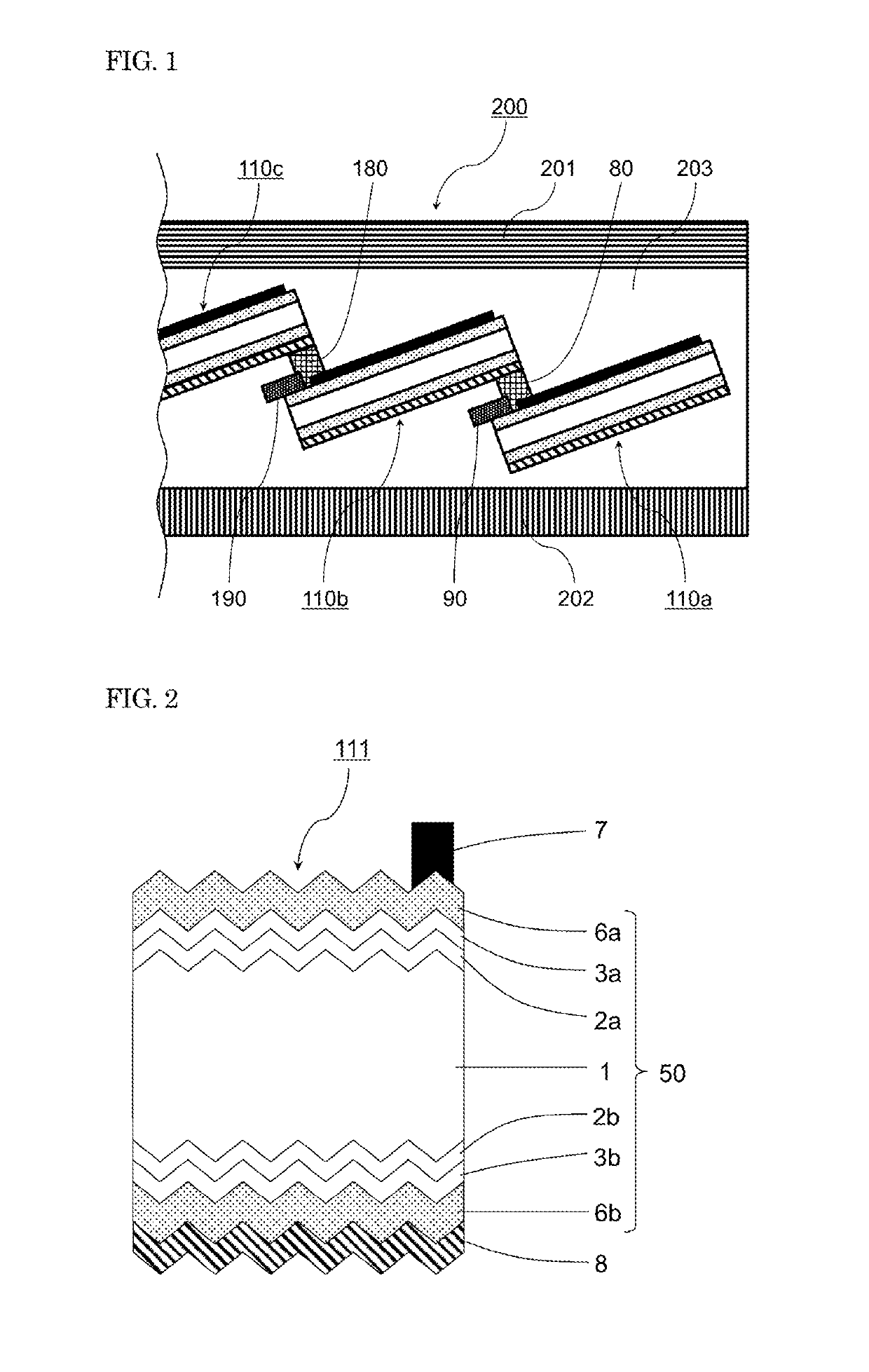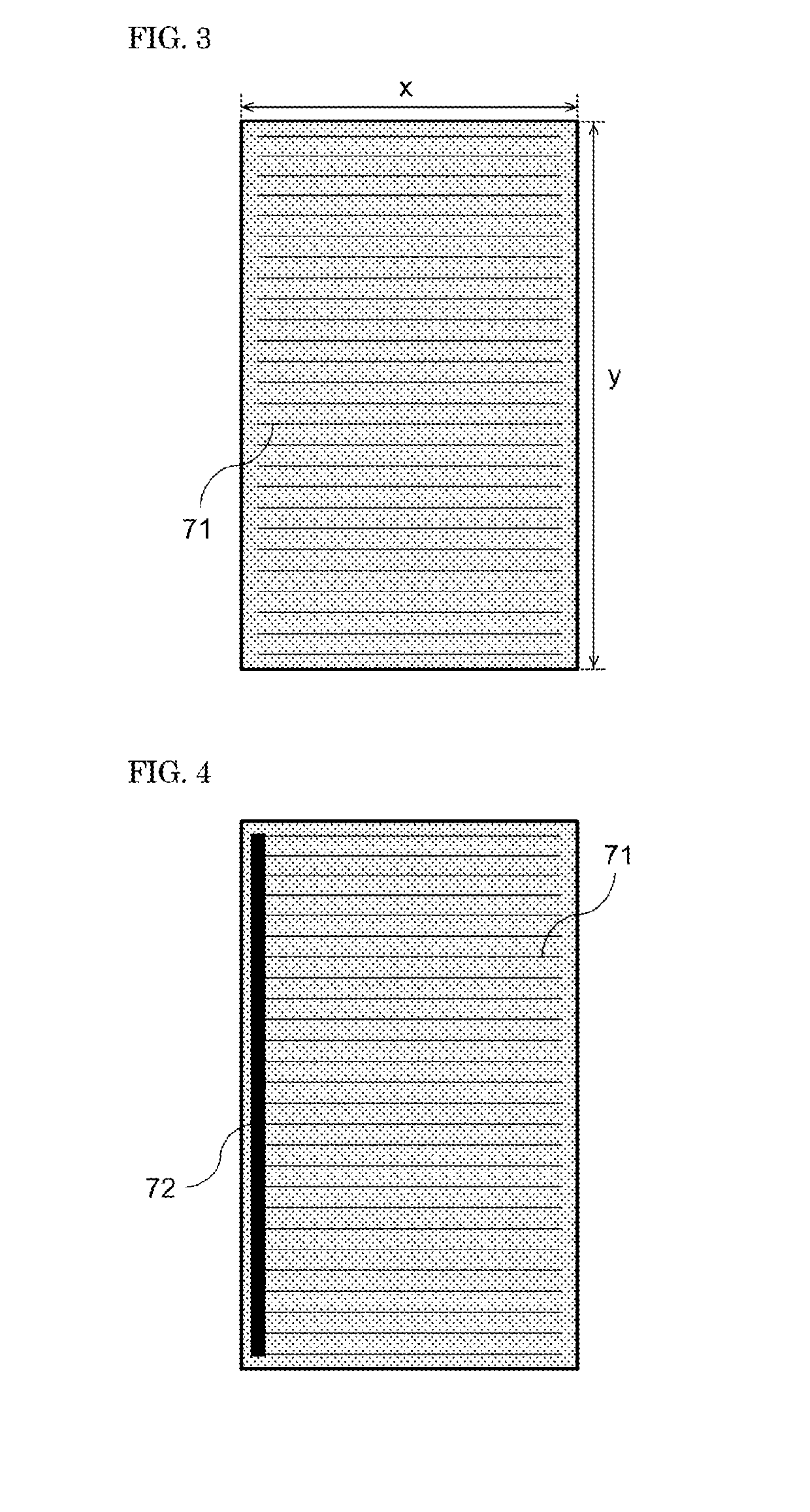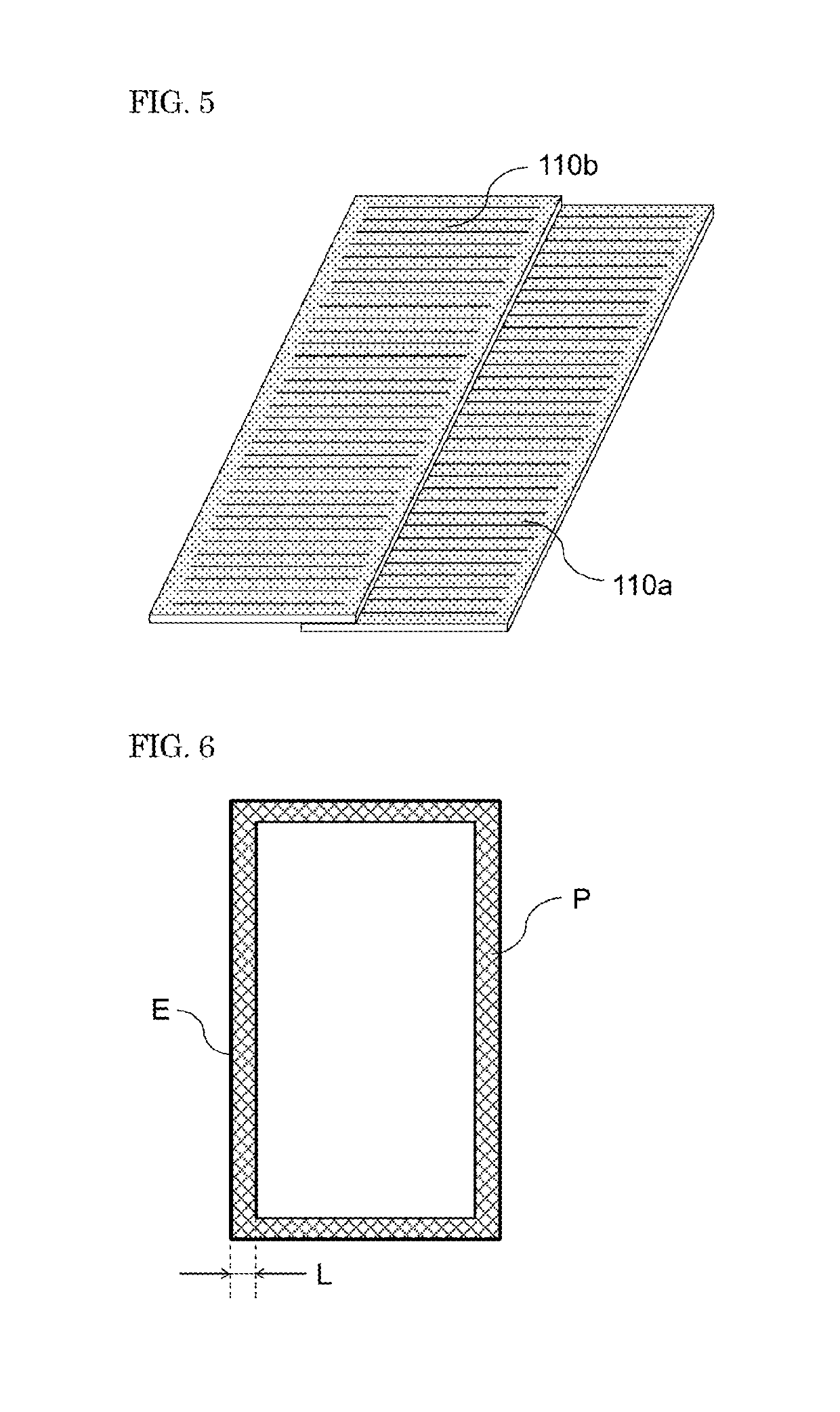Solar cell module and method for manufacturing same
a solar cell and module technology, applied in the field of solar cell modules, can solve the problems of insufficient power generation efficiency of modules, achieve the effects of suppressing the deterioration of module characteristics, small shading area, and easy preparation
- Summary
- Abstract
- Description
- Claims
- Application Information
AI Technical Summary
Benefits of technology
Problems solved by technology
Method used
Image
Examples
embodiment 1
[0098]First, one example of a method for manufacturing a solar cell module according to embodiment 1 will be described with reference to FIGS. 7A and 7B and FIGS. 8A and 8B.
[0099]As shown in FIG. 7A, a solar cell 100 is provided and the solar cell 100 is cleaved into two parts. The solar cell 100 has a photoelectric conversion section 150 that includes a single-crystalline silicon substrate of first conductivity-type, collecting electrodes 17 and 27 provided on a light-receiving surface of the photoelectric conversion section 150, and a back electrode (not illustrated) provided on a back surface of the photoelectric conversion section 150. The collecting electrode 17 includes a finger electrode 171 and a bus bar electrode 172, and the collecting electrode 27 includes a finger electrode 271 and a bus bar electrode 272.
[0100]The single-crystalline silicon substrate is prepared by slicing a silicon ingot to a predetermined thickness using a wire saw etc., the silicon ingot being prepar...
embodiment 2
[0133]FIG. 10 schematically shows embodiment 2. In FIG. 10, an insulating member 91 is also provided on a collecting electrode 17 of a first solar cell 110a.
[0134]In embodiment 2, the area of the insulating member at the stacked section can be increased, and therefore a higher buffer effect can be expected.
embodiment 3
[0135]FIG. 11 schematically shows embodiment 3. In FIG. 11, an insulating member 92 is in contact with a back electrode 28 of a second solar cell 110b. Preferably, a double-side tape made of polyimide etc. is used as the insulating member 92.
[0136]In embodiment 3, not only the effect described in embodiment 1 can be obtained, but also misregistration at the time of superimposing solar cells on each other can be suppressed. As a result, a poor external appearance that may be caused by misregistration of solar cells, and associated deterioration of module performance can be suppressed.
[0137]The width (length represented by W3 in FIG. 11) of the insulating member 92 that is in contact with the back electrode 28 of the second solar cell 110b is not particularly limited. When the insulating member 92 is a double-sided tape, the width of the insulating member 92 is preferably 0.5 mm or more from the viewpoint of adhesion. The width of the insulating member 92 is preferably 5 mm or less fr...
PUM
| Property | Measurement | Unit |
|---|---|---|
| thickness | aaaaa | aaaaa |
| thickness | aaaaa | aaaaa |
| pressure | aaaaa | aaaaa |
Abstract
Description
Claims
Application Information
 Login to View More
Login to View More - R&D
- Intellectual Property
- Life Sciences
- Materials
- Tech Scout
- Unparalleled Data Quality
- Higher Quality Content
- 60% Fewer Hallucinations
Browse by: Latest US Patents, China's latest patents, Technical Efficacy Thesaurus, Application Domain, Technology Topic, Popular Technical Reports.
© 2025 PatSnap. All rights reserved.Legal|Privacy policy|Modern Slavery Act Transparency Statement|Sitemap|About US| Contact US: help@patsnap.com



